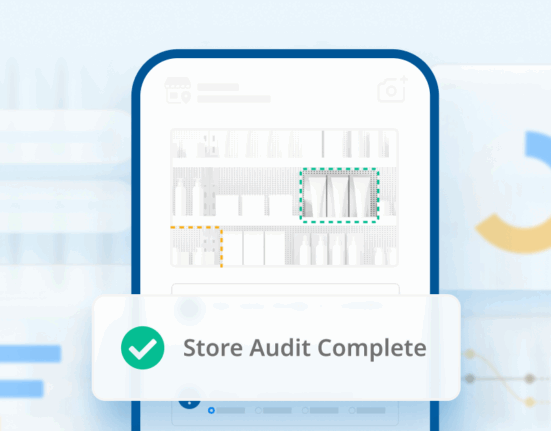Merchandising is obviously an essential part of retail, but keeping your strategy up-to-date and profitable is difficult in a growing competitive market.
There is a number of merchandising challenges that retailers are facing. Finding the right mix of time, budget, pricing, displays, and customer experience can be a big challenge when forming a successful merchandising strategy.
What is Merchandising?
The promoting and selling strategies that retailers use to increase sales, boost profits, draw in new customers, improve customer experiences, and shape brand image are all part of merchandising.
Often, merchandising includes things like creating a pricing strategy, display design and layout, loss prevention, and store upkeep. As we move further into modern retail, many businesses are also implementing online merchandising strategies.

Why is Merchandising Strategy Important?
A good merchandising strategy can do wonders for your business. Done well, it can improve customer experiences, boost sales, and increase overall product visibility.
Visual merchandising strategies like marketing displays in-store or online can draw in customers and increase foot-traffic. The same can be said for carefully planned sales and clearance events.
Having a well-planned store layout and monitoring your inventory makes it easier for consumers to find your products and increases the number of products purchased. Customer experience will also improve, leading to an increase in returning shoppers.
Key Challenges to Merchandising Strategy
Merchandising can certainly come with many challenges, and it’s important that these be addressed and dealt with as quickly and efficiently as possible. Many retailers will have issues come up that are specific to their business, but there’s some common snags everyone should look out for.
No. 1: Merchandising Compliance
As hard as you may work on your merchandising strategy, it won’t matter if in-store compliance isn’t being met. A lack of merchandising compliance can lead to several harmful consequences, like unhappy customers, underutilized store employees, and a bad reputation for your business.
When a shopper enters a brick-and-mortar store and is met with out-of-stock shelves and unknowledgeable store associates, their shopping experience is immediately tainted. This is why it’s important that you monitor your merchandising compliance at retail stores with tools like Wiser’s Retail Intelligence.
A store shelf should be fully stocked with your properly displayed products to be in compliance. Shoppers cannot purchase your items if they can’t find them. When a potential customer walks up to the shelf hoping to find your product only to be met with empty space or a poor display, the chances of them making a purchase from a competitor skyrocket.
Often, the reason for shelf non-compliance has to do with improper training of store associates. How can employees keep the shelves in compliance if they don’t know what that is or how to do it? Getting to the root of the issue can make a world of difference.

No. 2: Omnichannel Buying Experiences
It’s been mentioned repeatedly that modern shoppers experience more of an omnichannel buying experience. The best way to address this is not to shift your focus entirely to eCommerce, but rather to improve the customer’s experience when they’re switching between online and in-store shopping.
Consumers utilize online retail in many ways; one of the most common is to research the product and prices online, and then making the actual purchase in-store. Or, discovering and experiencing a product in-store only to go home and make the final purchase online.
Because of this, customers require as seamless of a transition between the two different retail types as possible and will gravitate toward retailers who can cater to this experience.
One way to improve in this area is with the use of loyalty programs that allow you to gather customer data whenever they shop. This allows all their personal shopping data to be gathered in one location that can be accessed wherever they decide to make their purchases.
No. 3: Customer Loyalty
Customers want to feel important. They want to feel like your business cares about them for more than just their money. Otherwise, what stops them from going to a competitor?
Customer experience is one of the biggest factors when it comes to brand loyalty. A negative experience can deter a customer from returning to a particular brand if they feel the product isn’t worth the hassle.
Shoppers aren’t just your customers; they are also people living full, well-rounded lives. Your goal should be to make them feel as if you are seeing those lives and catering directly to them.
This is another area where a customer loyalty program will come in handy. From this application or account, you can pull a customer’s purchase and browser history and then push advertisements or sales that are specific to them.
Customer experience is one of the biggest factors when it comes to brand loyalty.
Address them by name in their account, or in personalized emails or chatbot messages to ensure that shoppers feel seen. Even just these small touches can make a customer feel as though you value them as an individual and keep them loyal to your business.
No. 4: Visual Merchandising
Visual merchandising is how you draw-in shoppers with the use of retail displays. The goal is to highlight the brand or product’s appearance or benefits in an engaging and enticing way.
Visual merchandising is usually thought of as being mostly an in-store strategy, with the use of window displays, signs, mannequins, and other common retail store techniques. But, with the continuous rise in omnichannel shopping, these visuals must extend into the online world as well.
Effective visual merchandising will have a narrative. The customers should be able to see themselves using your product. In order to appeal to your shoppers, you need to know who is in the market for your goods to begin with. Then, you can focus your merchandising toward their sensibilities.
It’s important to appeal to the customer’s senses, so that you can capture their attention not just visually, but emotionally. Purchases are often influenced by the shopper’s emotions.

No. 5: Pricing Strategy
How you develop your pricing strategy is essential to a successful merchandising strategy. Your product prices have to feel worth it to the customer in order to make the sale. This is why elements from visual merchandising, like appealing to the customer’s senses and emotions, are so important.
A shopper is willing to pay a higher price if they feel like what they are buying is an easier life or a happy experience.
Pricing needs to be high enough to make a decent profit, but reasonable enough to compete in the market. Often, businesses will employ a merchandising strategy that relies on discounts, sales, or other types of promotions. These can appeal to target consumer groups by choosing specific items using your customer data to detect market trends.
The same customers from your loyalty program could also have access to member-specific promotions, increasing customer loyalty even further.
Of course, a good merchandising strategy addresses all of these challenges and more. The key is to ensure these moving parts are working together cohesively to promote your products and drive profits.









